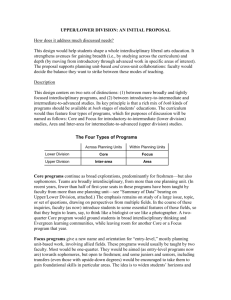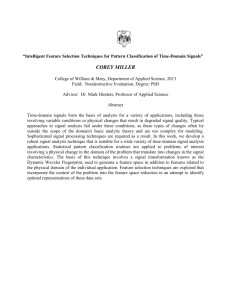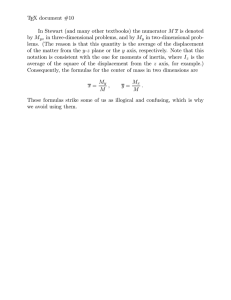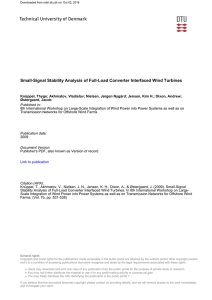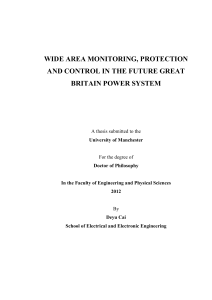Demystifying Electric Energy Systems Dynamics, Modeling and Control
advertisement
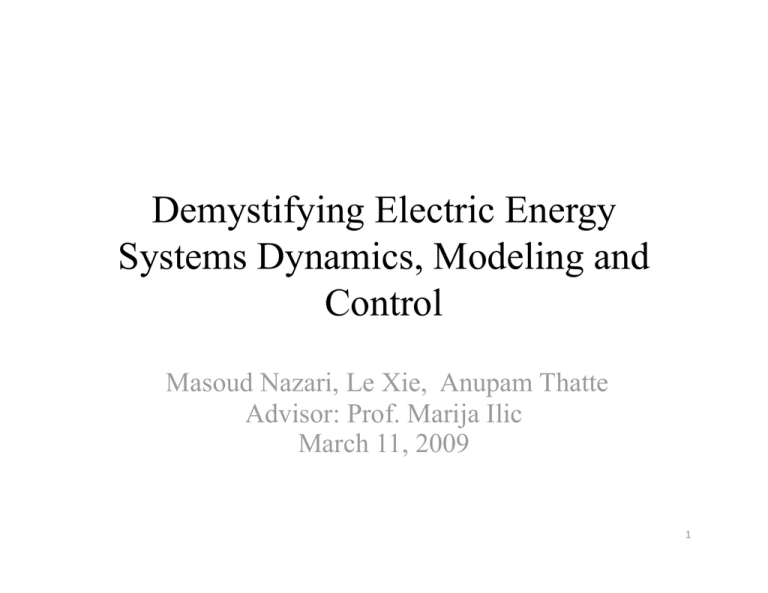
Demystifying Electric Energy
Systems Dynamics, Modeling and
Control
Masoud Nazari, Le Xie, Anupam Thatte
Advisor: Prof. Marija Ilic
March 11, 2009
1
Nature of long-term Power System
Oscillations
• During system-wide electro-mechanical oscillations,
the swing energy flows through the power lines back
and forth between the rotating masses of the different
generators with a frequency of typically 0.1-1 Hz.
• In the case of insufficient damping, small
disturbances may trigger growing oscillations, that
lead to loss of synchronization between groups of
generators and possibly blackouts.
• Two types of slow oscillations:
– Local
– Interarea
2
Real world example of inter-area oscillation
form Portugal distribution network
• Each area has synchronous machines and wind farms
• There is an electromechanical mode of oscillatory between two areas
• To resolve the problem Power System stabilizer is implemented
• Understanding the nature of inter-area oscillation in power systems is not an
easy task
3
Outline
• Understanding interactions (inter-area dynamics)
in power systems by drawing analogies with
mechanical systems and electrical circuits
– Mechanical systems
• Two mass spring system (Interconnected system)
– Electrical circuits
• Two RLC circuits
– Governor control of synchronous generators for
frequency control
– Excitation control of electromagnetic dynamics for
voltage/reactive power support [Working Paper]
4
Mechanical Systems
Two-Mass-Spring System
5
Double Mass Spring System
(damping)
f1=‐x2
k1
m1
(displacement)
x1
(speed)
x2
(damping)
f2=‐x4
k2
m2
m1
=
m2
=m
k1
=
k2
=k
(displacement)
x3
(speed)
x4
6
Possible System Decomposition
The whole system can be represented as:
0
0
1
0
x˙1
x1
x 3
S1 : = k1 + k 2
+
+
f
k
1
2
−
0
0
˙
x
x
x
2
2
4
m1
m1
0
0
1
0
x˙ 3
x 3
x1
S2 : = k 2
+ k2
+ f2
0 x 4
0 x 2
x˙ 4 −
m2
m2
D
D
f1 = − 1 x 2
f 2 = − 2 x4
m1
m2
7
Time-domain Response of the Coupled System
(Smaller friction f = -0.1x2
m1= m2 = 1, k1 = 0.001, k2 = 1)
8
Non-standard Singularly Perturbed
Form Intepretation
k1 = ε = 0.001
Couples system S takes on the form
€
εX˙ = A(ε)X
Rank(A(0)) = 3
That is, in this case λ( A(0)) = {−0.05 + 4.44i, − 0.05 − 4.44i, 0, - 0.1}
€
€
9
Electrical Circuit Analogy to
Mass-Spring System
10
Analogous Systems
Mechanical Quantity
Electrical System Analogue
Displacement, x
Charge, Q
Velocity, v
Current, I
Force, F
Voltage, e
Friction, D
Resistance, R
Spring Constant, K
Inverse of Capacitance, 1/C
Mass, M
Inductance, L
Potential Energy in Spring, (Kx2)/ Energy stored by Capacitor, Q2/
2
(2C)
Kinetic Energy in Mass, (Mv2)/2
Energy in Inductor, (Li2)/2
11
Double LC, with resistance
f1=‐x2
k1
f2=‐x4
m1
(displacement)
x1
(speed)
x2
k2
m2
(displacement)
x3
(speed)
x4
12
Possible System Decomposition
The whole system can be represented as:
0
1
x˙1
x1
S1 : = 1
−
0
˙
x
x 2
2
L1C1
0
x˙ 3
S1 : = 1 1 1
x˙ 4 − +
C2 L1 L2
0
+ 1
L1C2
1
x 3
+
0 x 4
0
x 3
+ f1
0 x 4
0
1
L1C1
0
x1
+ f2
0 x 2
R1
f1 = − x 2
L1
R1 R2
R2
f2 = − x4 + − x2
L2
L1 L2
13
Time-domain Responses of Coupled
S1 and S2
• L1=1; C1=1000; R1=1; L2=1; C2=1; R2=1
14
Non-standard Singularly Perturbed
Form Intepretation
1
= ε = 0.001
C1
Couples system takes on the form
€
εX˙ = A(ε)X
Rank(A(0)) = 3
That is, in this case
€
λ( A(0)) = {0,
− 0.5 + 1.32i, − 0.5 −1.32i, − 0.9995}
15
€
Governor Control of Synchronous
Machines Analogy to Mass-Spring
16
Dynamic Model of Two Machines
Infinite bus
Reference Bus
Machine 1
X1
Machine 2
X2
17
Decoupled model
Power flow:
0
0
1
0
δ˙G1
δG1
δG 2
S1 : = x1 + x 2
+ 1
−
0
0
ωG1
ωG 2
ω˙ G1 M x x
M1 x 2
1 1 2
0
0
1
0
δ˙
δG 2
δG1
G2
S2 : =
1
K2 + 1
−
−
0
ω
˙
G 2
ωG1
ωG 2 M x
M 2 x 2
M 2
2 2
K
K
f1 = − 1 ωG1
f 2 = − 2 ωG 2
M1
M2
18
Time-domain Response of the Coupled
System
• M1=1; K1=1; X1=100; M2=10; K2=1; X2=1
• Slow inter-area oscillation (singular characteristic of
system matrix)
19
Concluding remarks
• Understanding analogies between: (1)
mechanical systems and electrical circuits; and,
(2) electric power systems, is a good way to
introduce power systems problems (2) to those
familiar with (1) [WP…];
• In this presentation we illustrated how can one
interpret slow inter-area dynamics in power
systems by understanding simpler systems (1).
• We are preparing an extensive paper on these
analogies;
20
